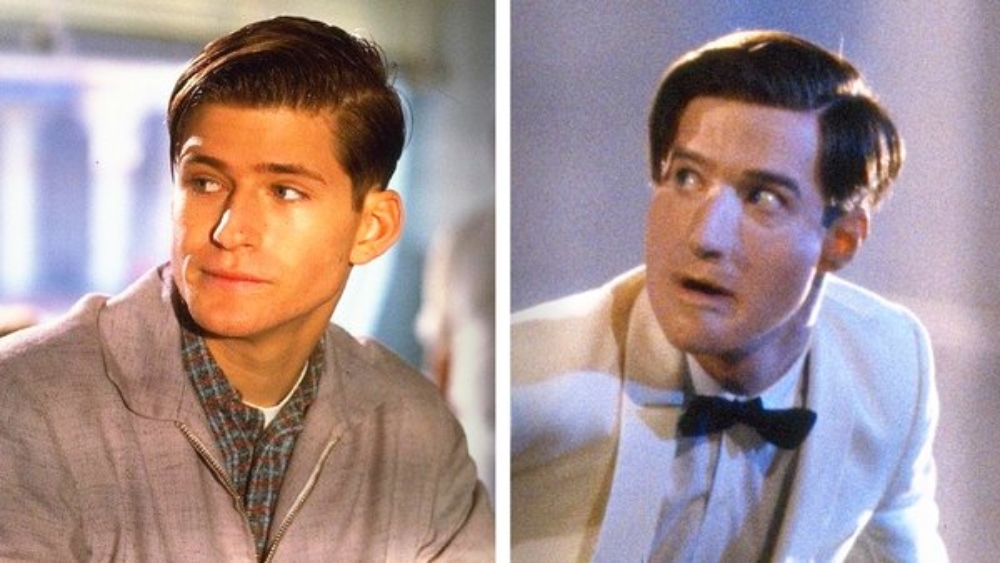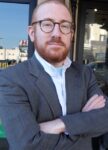Well, this thing isn’t getting any closer to a resolution, is it?
It’s not just the AI stuff, which I’ll address directly in a moment; there’s also the fact that, increasingly, being a performer or a creator of the content that is performed does not provide a sustainable living for most of those plying the trade. The AMPTP disputes this, of course, because why wouldn’t it? Obviously, the organization that holds the financial reins is going to claim that everything is fine and that the workforce is asking for too much and none of it is remotely reasonable, because that’s what The Money has always done, since the beginning of time.
Doubt it? Just the other day, at the Audio-Visual Producers Summit in Italy, Sony Pictures Entertainment Chairman and CEO Tony Vinciquerra claimed the AMPTP’s latest offer to the actors was “the best offer that has ever been made to the SAG-AFTRA group.”
A few days before that, SAG-AFTRA had released a comparison sheet that showed what it was asking for and what was offered, and how far apart the sides were. Wage increases to reflect inflation, profit participation for streaming views, health and retirement fund contributions, proper and appropriate reimbursement for relocation expenses, all of those things are covered, as well as plenty of other stuff, and it’s pretty clear how far apart the sides are.

It’s also clear that if the AMPTP considers this its best deal — a five percent wage increase instead of 11 percent, no compensation whatsoever for streaming, nominal increases in health and retirement contributions that fall short of inflation levels, and so on — then I don’t think I want to know what the others looked like. Also, we had all better hunker down for a long, long stalemate.
Honestly, I think meeting in the middle on wage increase and health and retirement contributions gets those parts done, and the actors would probably back off on some of the others, if the streamers would open their books, reveal their viewing numbers, and allow the actors to get residuals for the number of views. Obviously, this goes for the writers, too, so let’s continue this conversation covering both concurrent strikes as we cover this ground. For all intents and purposes, the major issues are the same, anyway.
That, ultimately, is what this is all about. The ability to use AI and not have to share the streaming wealth, both of which are firm AMPTP wants.
Let’s do the second part first. It has become evident that the streaming services would do just about anything to keep from having to reveal their viewing numbers and pay out any kind of residual for the content they show. This goes against their entire model, after all, which is to purchase content for their catalogs without having to pay anything more than a licensing fee for it. The fact that they are using someone’s work to get eyes on their service but don’t want to pay that person or people for their work is not a surprise, because, again, see the history of business negotiations. But times have changed and whereas there used to be fewer outlets for someone to sell their wares, now that competition is fierce and the balance of power has shifted.
To some extent, show business will always be a buyer’s market, but with the variance of options, sellers have more juice than ever. The buyers — that is, the AMPTP — understand this, and are terrified by it, and so its members are doing everything they can to stop the writers and actors from getting what they want. It’s why one unnamed exec said a couple of weeks ago that the plan is to wait until the writers are literally homeless before they come back to the table, and the normally infallible Bob Iger made his tone-deaf comments about the writers’ and actors’ demands being disturbing.

This whole thing goes away for a relatively small amount of money, but that’s not really the issue. The issue is that by allowing the streaming numbers to become public information, the guilds would be opening up Pandora’s Box. I think they would all rather die, like actually die, than let that cat out of the bag, which is a major problem that doesn’t appear to have a solution because it’s becoming clearer and clearer that neither side is going to budge on this.
That brings us to the second issue, which is the AI thing. We’ve covered this ground before, I know, but more information has come out and it’s worth examining. For one thing, the AMPTP has offered a pittance to background performers to scan their likeness and then use it however they want to use it in perpetuity. A pittance being either a day’s work or a half day’s work, depending on what you read, but either way, it’s beyond insulting.
And then there’s the larger part of this, which is the notion of using someone’s likeness to create something new. Putting someone’s face on another person’s body is old hat — it was used successfully and seamlessly in movies like Skyfall, The Social Network, and Furious 7, to name three — but creating something entirely new from scratch? That’s the next step.
Some time back, before the actors struck, SAG-AFTRA president Fran Drescher made an ill-advised and incorrect comment about the actors and writers having different needs. Clearly, someone pulled her aside and said, “Uh, Fran? About that…” And so she walked that all back pretty darn quickly. Now, as the Actors Strike comes to the end of its second full week and there’s no end in sight, it’s also fairly evident that the needs of both the writers and actors are, in fact, not so different after all.
There is a mutually assured destruction aspect to all this, with the difference being that if the studios cave in, they’ll just lose a little bit of money, whereas if the actors and writers do it, they lose everything.
The funny thing is, there’s a bit of precedent to all this, that should remind all creative types that the studios and streamers are not remotely playing when it comes to this AI stuff.

Some of you may recall a little movie from the 1980s called Back to the Future. Starred Michael J. Fox as teenager Marty McFly, who used a DeLorean as a time machine to go back 30 years and meet his parents while they were still in high school. It was a monster hit, with two sequels arriving in theaters a few years later. Well, the guy who played Marty’s dad, George, was an actor named Crispin Glover. When the first sequel script came around, he thought it was garbage, and demanded a $1 million payday to show up.
The producers, including Steven Spielberg and co-writer/director Bob Zemeckis, told him what he could do with that, and hired another actor to play the role. Rather than hire a lookalike, though, they used a facial mold they’d made of Glover’s face for the first movie and put it on the new guy, making it seem like Glover was actually in the movie. Which he most certainly was not. At one point, Spielberg apparently saw the new guy in the Glover mask and joked, “I guess Glover got his million.” Yuck yuck.
Glover sued, and Universal settled before it went to trial, to the tune of just north of three-quarters of a million bucks.
That was more than 30 years ago, and they were already pulling this garbage. What it cost them was essentially tip money, even if that payout would be closer to $1.8 million today, but what is important is the intent. They tried to get away with something, and Glover caught them. You think, with so many billions of potential dollars at stake moving forward, they won’t run wild with this technology if they have the chance?
If you believe that, I have some land to sell you in Zimbabwe.
The thing I sort of can’t get over is that the amount of money the actors and writers are looking for isn’t outlandish. One proposal I saw from the writers had the three-year total basically equal to the annual salaries of the top six highest-paid Netflix executives. If the actors’ numbers were similar, or even twice that, then we’re still not talking about a ton of dough. I understand asking executives to lower their salaries, or shareholders to see any dip at all in their profits, is a rather large anathema, but it does lead us back to the same old refrain.
Without content, what exactly do you have? I know each of these services has plenty of movies and TV shows in their libraries, but part of the reason there is so much of it is to appeal to a wide variety of viewers. But not everyone is going to watch everything on a given service, and when they inevitably run out of things there, they’re going to turn elsewhere. You would be surprised — or maybe you wouldn’t, come to think of it — how quickly people can run through an entire run of a show or every entry in a movie franchise.
At some point, people start looking elsewhere or, worse, turn off the TV entirely. That’s when things start to get dire, profits really start to take a dip, and people start panicking. Will things have to go that far for the AMPTP to fully understand the scope of this and come back to the table, willing to deal?
Sadly, I’m starting to think the answer to that is, “yes.”
 Neil Turitz is a journalist, essayist, author, and filmmaker who has worked in and written about Hollywood for more than 25 years, though he has never lived there. These days, he splits his time between New York City and the Berkshires. He’s not on Twitter, but you can find him on Instagram @6wordreviews.
Neil Turitz is a journalist, essayist, author, and filmmaker who has worked in and written about Hollywood for more than 25 years, though he has never lived there. These days, he splits his time between New York City and the Berkshires. He’s not on Twitter, but you can find him on Instagram @6wordreviews.
You can read a new installation of The Accidental Turitz every Wednesday, and all previous columns can be found here.



